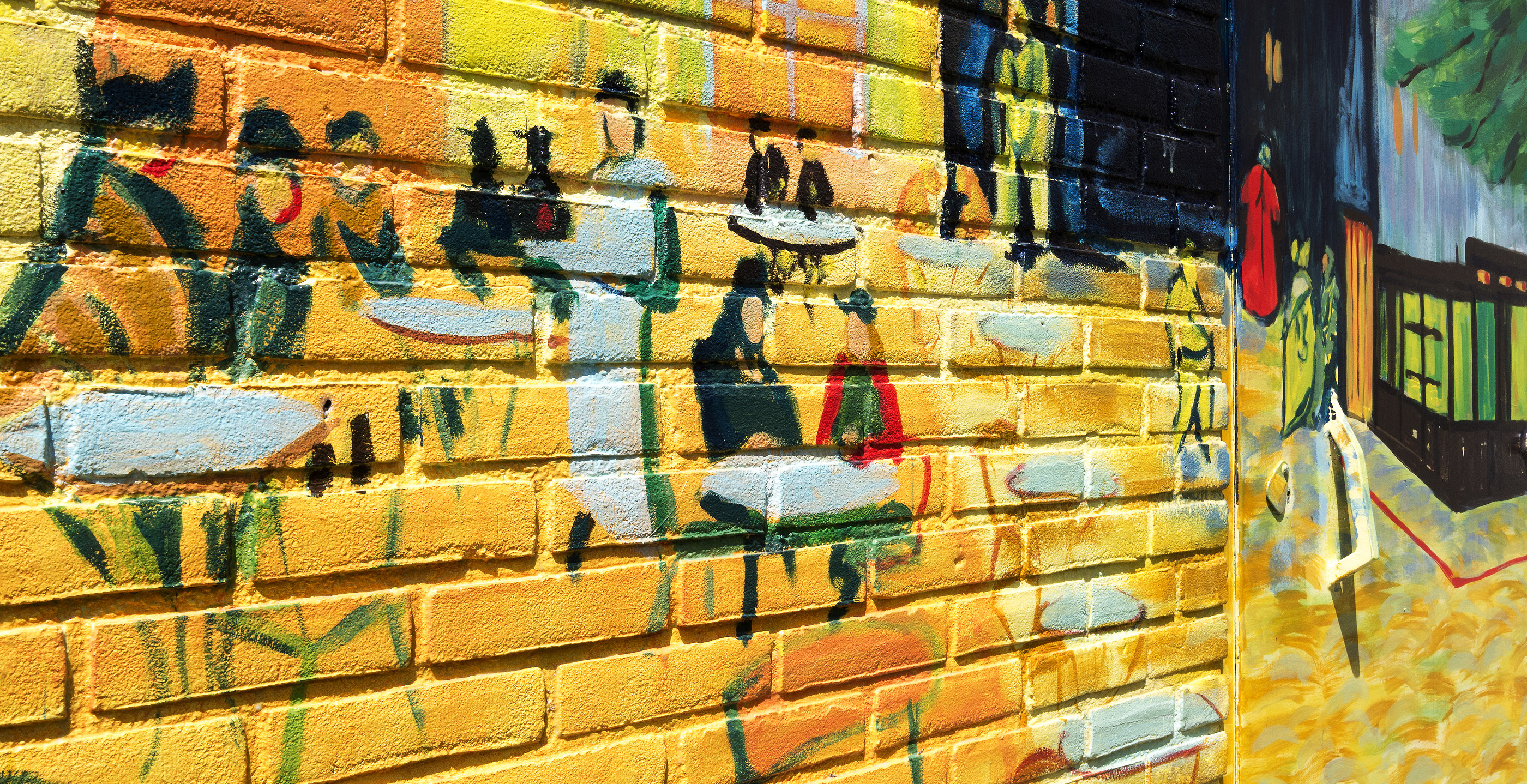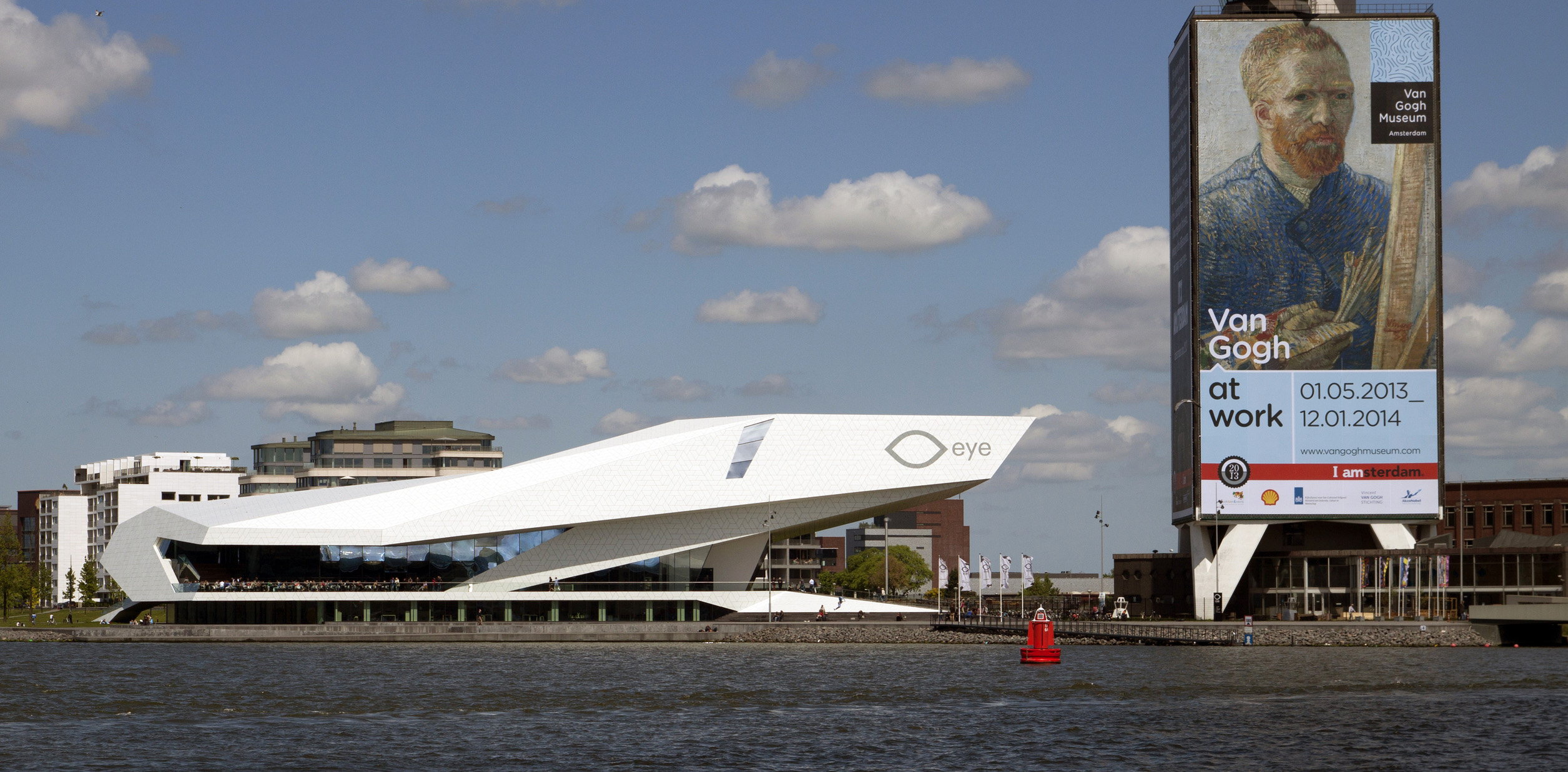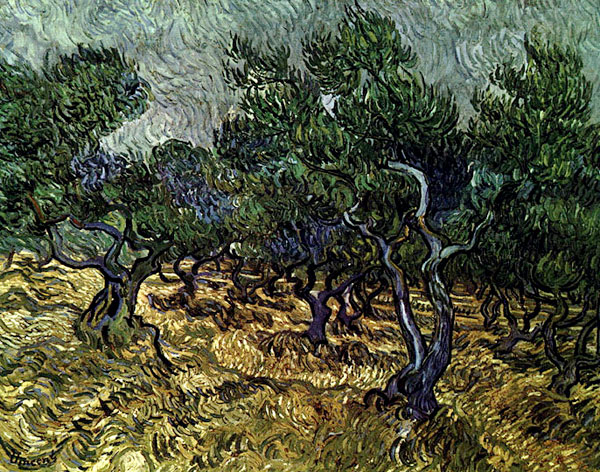AMSTERDAM - Vincent van Gogh has never looked better. And in this country, where they pronounce van Gogh as though they have something caught in their throats, he has never been more popular.
So on a sun drenched day in early April, the kind of morning that provided van Gogh with the perfect light he cherished for so many of his landscape masterpieces, I joined an excited crowd that gathered outside a modern-looking building that bears the tortured genius' name in this city's beautiful museum square.
The mostly youthful crowd shuffled their feet in anticipation of the Vincent van Gogh Museum's opening and exchanged opinions on the great artist's works. A young man and woman engaged in a lively debate about the merits of van Gogh versus Rembrandt, the country's other world-renowned artist. The woman won when she delivered this knockout blow: "Well, they never built a museum bearing Rembrandt's name."
The doors finally opened and we made our way into the museum - one of several in the Netherlands displaying van Gogh's works.
"Go right to the bottom level," a van Gogh museum veteran advised. "That's where his best works are being displayed."
As we made our way to the lower level, we passed a series of quotes engraved on the museum's cold concrete walls, words taken from letters van Gogh wrote to his brother, Theo, and friend and fellow artistic genius, Paul Gauguin.

Above: Van Gogh's brilliance even finds its way into modern street art in Holland.
In an 1889 letter to Gauguin, van Gogh noted: "My dear friend, O to create in painting what the music of Berlioz and Wagner has already accomplished before us ... a consolatory art for broken hearts."
Those words and another passage from an 1886 letter to his beloved brother, Theo, in which van Gogh said: "The creative power cannot be repressed, one must vent to what one feels," reveals an insight into the troubled life of the tormented artist who first cut off his ear and then years later died from a self-inflicted gun shot wound.
Van Gogh is not alone in this museum. Works of the great Dutch masters like Rubens and Rembrandt and those who inspired Vincent, like Mauve, Mattjijs Maris and Waissenbruch, hang alongside van Gogh and works of his contemporary friends like Gauguin, Monet, Camille Pissarro, Seurat, Toulouse Lautrec and Signac. Very impressive indeed.
When we finally reached the lower level of the museum, we came face-to-face with Vincent. Or at least nine of the many self portraits he did during his complicated life, which saw him start out on a path to the clergy only to be encouraged by Theo to give up that ambition at age 27 and concentrate on his art, instead.
The world owes a great debt to Theo.
The nine self-portraits are like fingerprints of the artist's life. In early portraits, we see a man relatively at peace with himself but as the years progressed, the torment that invaded him begins to show through enraged eyes - cold China blue eyes that never seem to leave you as you make your way around the exhibits.
You get so close to his great works here that you can see the depths of the short, broad strokes so unique to van Gogh. You can smell the paint!
Wall after wall contains one great masterpiece after another. I quickly realized that to do justice to this museum, I should have budgeted more time here.

Above: Van Gogh's work even has influence on Holland's modern designs like the Eye museum.
Van Gogh's works leap off the canvas and into your soul. They both excite and disturb visitors. Paintings like Gauguin's Chair (minus Gauguin), The Harvest, the anguished faces of the characters in the Raising of Lazarus and one of his 1888 self portraits, which shows his descent into madness quickening, haunted me for days after my visit.
It's only when you are standing just centimetres away that you appreciate the depth of this genius, whose 1888 Still Life With Coffee Pot, with its combination of vivid colours, makes it look like a 3-D image.
The rooms of the museum are laid out to reflect the many different periods and places that were a part of van Gogh's life - like Arles, where he painted my favourite, the Bedroom at Arles.
There is no better illustration of van Gogh's drift into madness than his 1889 work called The Olive Grove. One gets the impression the defined strokes and tangled bare trees reflected on canvas are what was actually happening in his mind.
Many of the priceless works are signed simply Vincent, but many others have no signature - the artist secure in the knowledge that his style was the only imprint needed.
As I moved around the museum, facts about van Gogh's life came to light. One that intrigued me most was that between 1869 and his death in 1890, Vincent lived in 19 different places in Holland, England, Belgium and France.
The museum also revealed van Gogh's admiration for Japanese art and brings to light the fact that he decorated his own walls with Japanese prints and illustrations that he cut out of magazines.
While the van Gogh museum here has a great assortment of the artist's works, I was told that the nearby Kroller-Maller Museum in de Hoge Venen (a Dutch national park about two hours east of Amsterdam outside the city of Apeldoorn), was exhibiting some rare van Gogh pieces.
So after a day doing what tourists do when they come to Amsterdam - hanging around Leidseplein Square sipping Pils beer and watching the world ride past on bicycles; taking the obligatory canal cruise past landmarks like World War II hero Anne Frank's house and the city's beautiful Central train station that is built on 9,000 pillars and welcomes 100,000 people daily; strolling through the city's red light district (for research purposes only); and visiting the fabulous Rijksmuseum, where Rembrandt's classic painting The Nightwatch, in which he shed new light on the old masters' technique and changed the course of Dutch painting forever - it was off to de Hoge to see what other van Gogh treats the Dutch had to offer.
Driving to the Kroller-Maller Museum, along pleasant roads lined with more thatched cottages than you'll find in England and even the odd windmill, was an unexpected thrill. It was Sun., March 30 when I visited Kroller-Maller.
That's the date van Gogh was born, and the staff presented visitors - a record 2,600 - with cake and presents.

Above: Van Gogh was indeed a mad genius.
Entrance to the park included a museum pass and the chance to ride bikes - there are hundreds on the property for people to enjoy - along a network of carefully planned fietspad (cycle paths). The paths snake around and through the giant park, which offers everything from thick forest to heather-filled meadows to a tiny desert. And because this is the Netherlands, it's easy riding.
You can take the bikes to the edge of the park and walk to nearby towns like Otterlo, where you can sample some unique Dutch cuisine like erwten soep, a thick, rich pea soup that comes with chunks of roggebrood (a local sausage) and is served with a side order of spek (cured bacon) sandwiched between tiny pieces of black bread. The serving costs just 2.75 euros and is so large that I split it with a friend. That left room for a local dessert called pannenkoek, a Dutch pancake that is a cross between a regular flapjack and a crepe and comes filled with chunks of apples or raisins drenched in cognac.
The cycle ride back to the museum burned off all the extra calories I accumulated at lunch - I hope.
Between 1908 and 1929, Helene Kroller-Maller bought 91 paintings and 185 drawings by van Gogh. The rarely seen charcoal sketches are worth the price of admission alone and reveal how the great artist first sketched and developed characters before painting them. The drawings date back to van Gogh's early childhood and indicate his ability as an artist came to light at the age of 10.
The museum, which was built in the park at the insistence of the Kroller-Mallers, who both died here in their fabulous hunter's castle, also offers up some of van Gogh's greatest works, like the Bridge at Arles, Flowers in a Blue Vase and another of my favourites, Cafe Terrace at Night.
Awesome!
The museum is an oasis of art and, besides van Gogh's works and a sizeable collection of other great world paintings, there is also a sculpture park where patrons can stroll among abstract pieces, including the work of Henry Moore. Be prepared for some odd-looking sights. Are the drums stacked beside the museum just that or are they art? You be the judge.
Just like the van Gogh museum in Amsterdam, there are passages extracted from van Gogh's letters plastered all over the walls at the Kroller-Maller. Again, some are quite revealing. In one, van Gogh said: "I have learned to measure and to observe and to seek for broad lines. So what seemed impossible before is gradually becoming possible now, thank God."
My remarkable visit to Kroller-Maller near an end, I came upon van Gogh's famous Windmills of Dordrecht. A letter opposite the striking painting that van Gogh envisioned while on a train trip from the Hague to Dordrecht in 1881 reads: "I did this as a souvenir of my trip."
My souvenirs of this trip to the Netherlands are the memories of those incredible museums displaying Vincent van Gogh's brilliance.